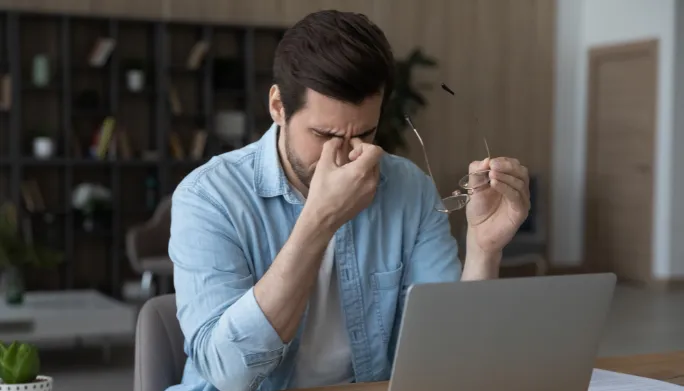Pickleball has become one of the fastest-growing sports worldwide, drawing players of all ages with its fun, fast-paced gameplay. While it’s less physically demanding than tennis, the sport still comes with its share of injuries. One of the most common issues players experience is tennis elbow, a painful condition that affects the tendons on the outside of the elbow. At Proactive Health Richmond Physiotherapy Clinic, we often see pickleball players struggling with this problem, especially if they are new to the game or have recently increased their playtime.
If you’ve ever wondered how to prevent tennis elbow in pickleball, you’re not alone. The good news is that with the right approach to technique, equipment, and conditioning, you can significantly reduce your risk of developing this painful condition while continuing to enjoy the game.
What Is Tennis Elbow and Why Does It Happen in Pickleball?
Tennis elbow, or lateral epicondylitis, occurs when the tendons that attach to the outer elbow become irritated or inflamed. In pickleball, this usually happens due to repetitive stress from swinging the paddle, especially with improper technique. Unlike tennis rackets, pickleball paddles are shorter and have smaller grips, which can increase strain on the forearm muscles if players over-grip or use excessive wrist movement.
The pain often starts gradually and may feel like:
- A burning sensation on the outer elbow.
- Tenderness when gripping the paddle.
- Weakness in the wrist or difficulty holding objects.
Without proper care, tennis elbow can become chronic and limit your ability to play. That’s why prevention is far better than treatment.
Common Mistakes That Lead to Tennis Elbow in Pickleball
Before diving into prevention strategies, it’s helpful to understand what habits increase your risk. At Proactive Health Richmond Physiotherapy Clinic, we often find that players develop tennis elbow due to:
- Overuse without rest – Playing long sessions multiple times a week without recovery puts constant strain on the elbow.
- Incorrect grip size – Using a paddle with a grip that’s too small or too large forces the forearm muscles to work harder.
- Excessive wrist motion – Snapping the wrist instead of engaging the shoulder and core leads to repetitive tendon stress.
- Poor warm-up habits – Jumping straight into a match without stretching the forearms and shoulders increases the chance of irritation.
- Weak supporting muscles – A lack of strength in the shoulder, back, and forearm muscles means the elbow absorbs more stress than it should.
By addressing these risk factors, you can dramatically reduce your chances of developing tennis elbow.
How to Prevent Tennis Elbow in Pickleball
1. Use the Right Paddle and Grip Size
Your paddle is your most important piece of equipment. If the grip is too small, you’ll tend to squeeze harder, putting extra tension on your forearm tendons. A grip that’s too large forces awkward wrist movement.
A quick test: wrap your hand around the paddle grip. If your fingertips barely touch your palm, it’s the right size. If your fingers overlap, the grip is too small; if there’s a big gap, it’s too large. Lightweight paddles can also reduce strain on the elbow.
2. Focus on Proper Technique
Good form is crucial for injury prevention. Instead of overusing the wrist, generate power from the shoulder and core. Your swing should be smooth and controlled, not jerky. A physiotherapist or pickleball coach can help refine your strokes so that you’re using the right mechanics.
3. Warm Up Before Playing
Cold muscles and tendons are more vulnerable to injury. Spend at least 5–10 minutes before each game warming up. Light jogging, arm circles, and gentle stretches for the wrist and forearm help prepare your body for play.
4. Strengthen the Supporting Muscles
Building resilience in the muscles around the elbow reduces strain during play. Some helpful exercises include:
- Wrist curls: Strengthens the forearm flexors.
- Reverse wrist curls: Targets the forearm extensors.
- Shoulder external rotations: Improves shoulder stability.
Even a few minutes of strengthening exercises a few times a week can make a big difference.
5. Don’t Play Through Pain
If you start to feel discomfort in your elbow, don’t ignore it. Continuing to play can worsen the condition and lead to longer recovery times. Take a break, ice the area, and consider scheduling a physiotherapy session before it becomes a chronic problem.
The Role of Physiotherapy in Preventing Tennis Elbow
At Proactive Health Richmond Physiotherapy Clinic, we help athletes and recreational pickleball players recover from elbow pain and prevent it from recurring. Our approach often includes:
- Movement assessments to identify faulty mechanics that may contribute to strain.
- Manual therapy and soft tissue treatment to reduce tension in the forearm muscles.
- Individualized exercise programs that strengthen weak areas and improve mobility.
- Education on proper posture and technique so you can stay active without pain.
By addressing both the symptoms and the underlying causes, physiotherapy offers a long-term solution rather than just short-term relief.
Lifestyle Tips to Support Elbow Health
Prevention isn’t just about what you do on the court. Your daily habits also matter. Small changes can make your elbows more resilient:
- Take regular breaks from activities that involve gripping or typing.
- Stretch your forearms during the day, especially if you use a computer often.
- Apply ice to your elbow after long play sessions if you feel soreness.
- Stay hydrated and maintain good overall fitness, as fatigue increases injury risk.
When to Seek Professional Help
If your elbow pain doesn’t improve with rest, or if it interferes with daily activities, it’s time to consult a professional. Early intervention prevents a minor issue from developing into chronic tendon damage. At Proactive Health Richmond Physiotherapy Clinic, our team specializes in treating sports-related injuries, including tennis elbow caused by pickleball.
We can guide you through personalized exercises, hands-on treatment, and practical adjustments to get you back on the court safely.
Final Thoughts
Pickleball should be fun, not painful. Learning how to prevent tennis elbow in pickleball comes down to a few key steps: using the right paddle, practicing good technique, warming up, strengthening supporting muscles, and listening to your body. Prevention is always easier than dealing with a painful, lingering injury.
If you’re already noticing elbow pain, don’t wait for it to worsen. The expert team at Proactive Health Richmond Physiotherapy Clinic can help you recover and return to the court stronger than before.
Contact us today!



